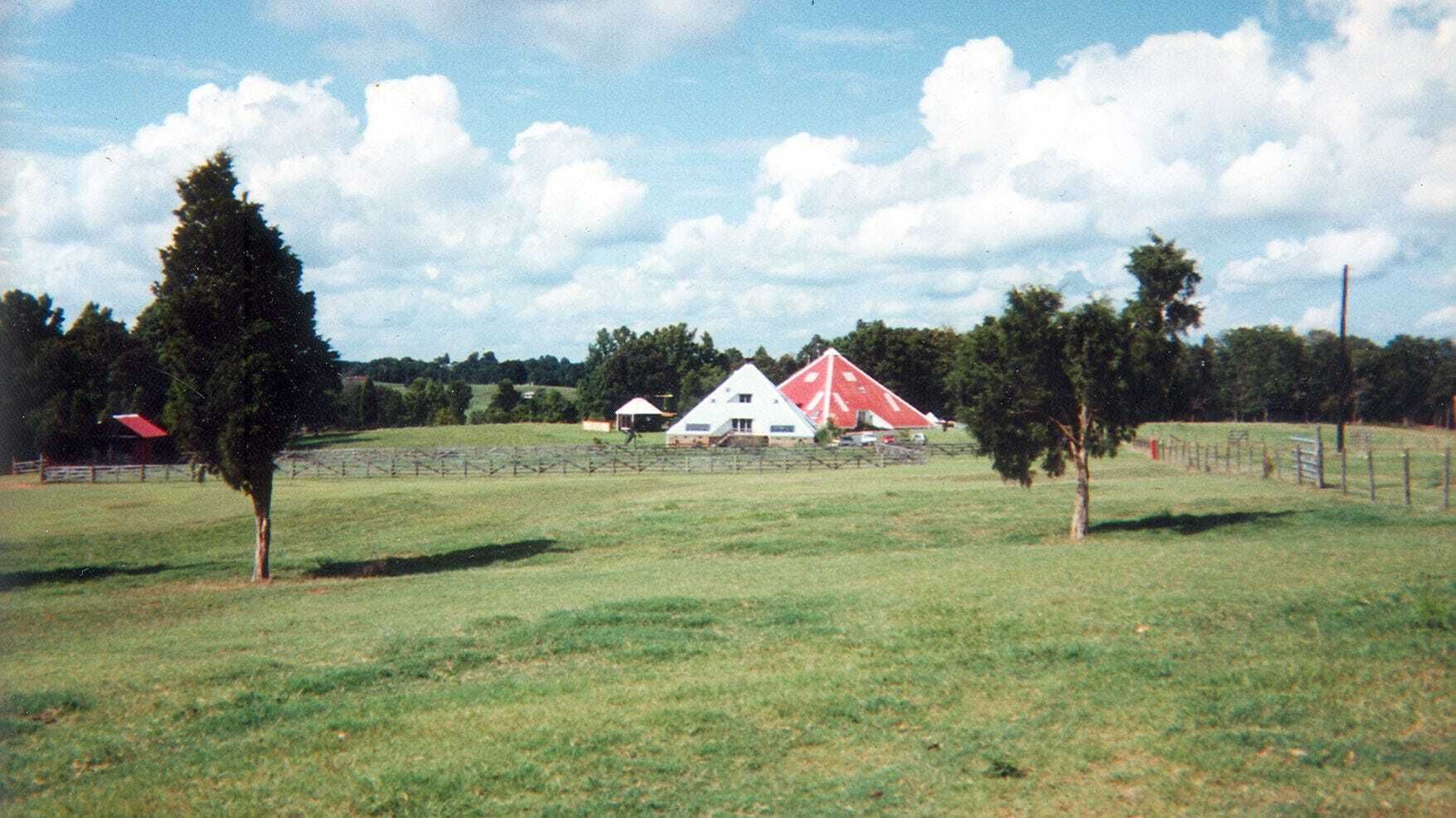
The ancient pharaohs of Egypt built the pyramids as their permanent homes for the afterlife. The people of Memphis, Tennessee built a pyramid to house the Grizzlies, but now use it largely to house fishing rods and hunting rifles. Some citizens of Rowan County, however, built some pyramids as, you know, a place to live.
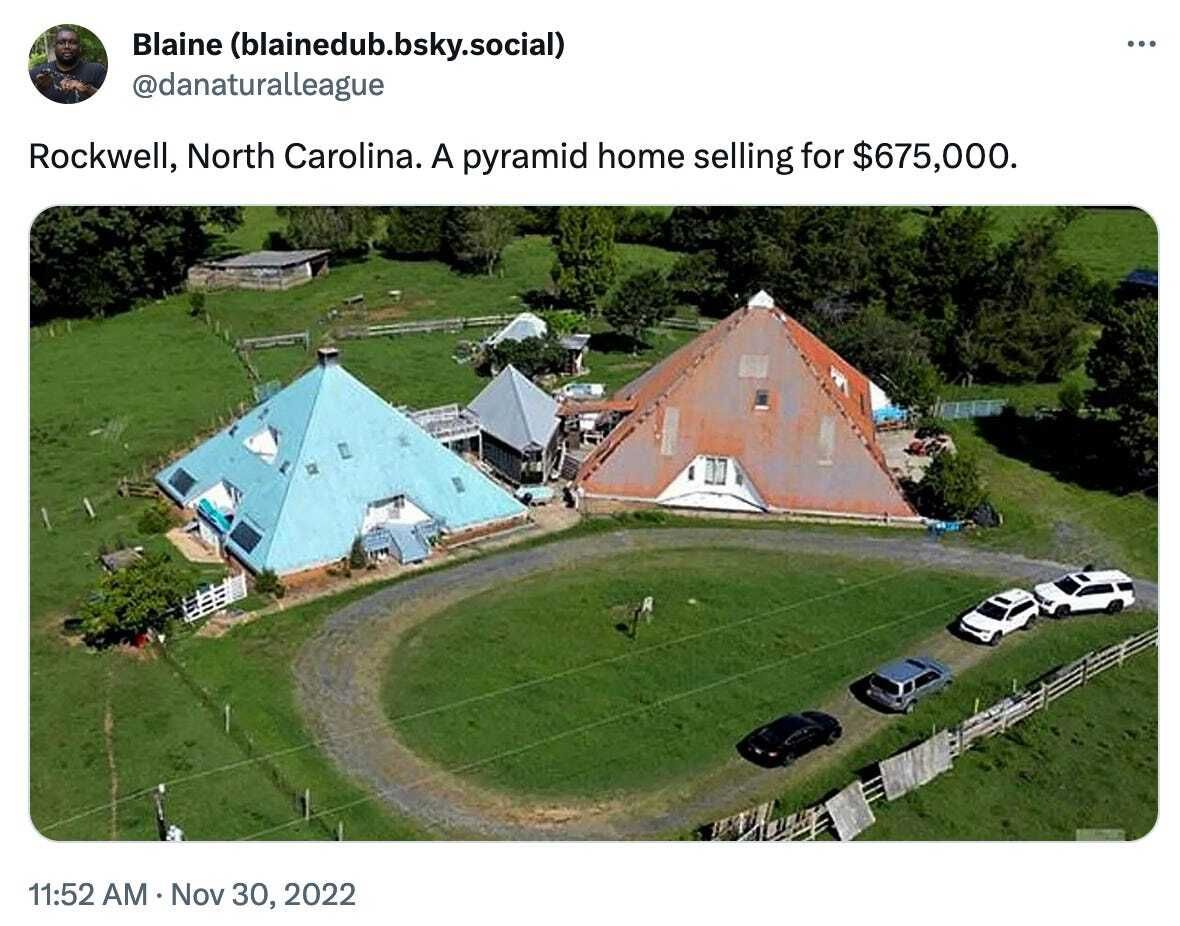
This particular real estate listing was sent to me by Rabbit Hole reader and running coach Philip Sanford. Rockwell is a small town about 10 miles southeast of Salisbury, and a town where you would not expect someone to be living in in a set of pyramids. The listing itself says the pyramids were built in 1987, and come in at 3,687 square feet of living space, with three bedrooms and seven (!) bathrooms. At this point, the property’s been on the market for about two months.
So, yes, you can buy some pyramids in rural North Carolina at a fairly good price of $675,000 (for reference, median home prices in Rockwell are about 1/2 to 1/3 of the listing price here, but this property also comes with 18 acres of land). But the bigger question here is, uh, WHO BUILDS PYRAMIDS IN ROWAN COUNTY?
A Modern(ist) Man
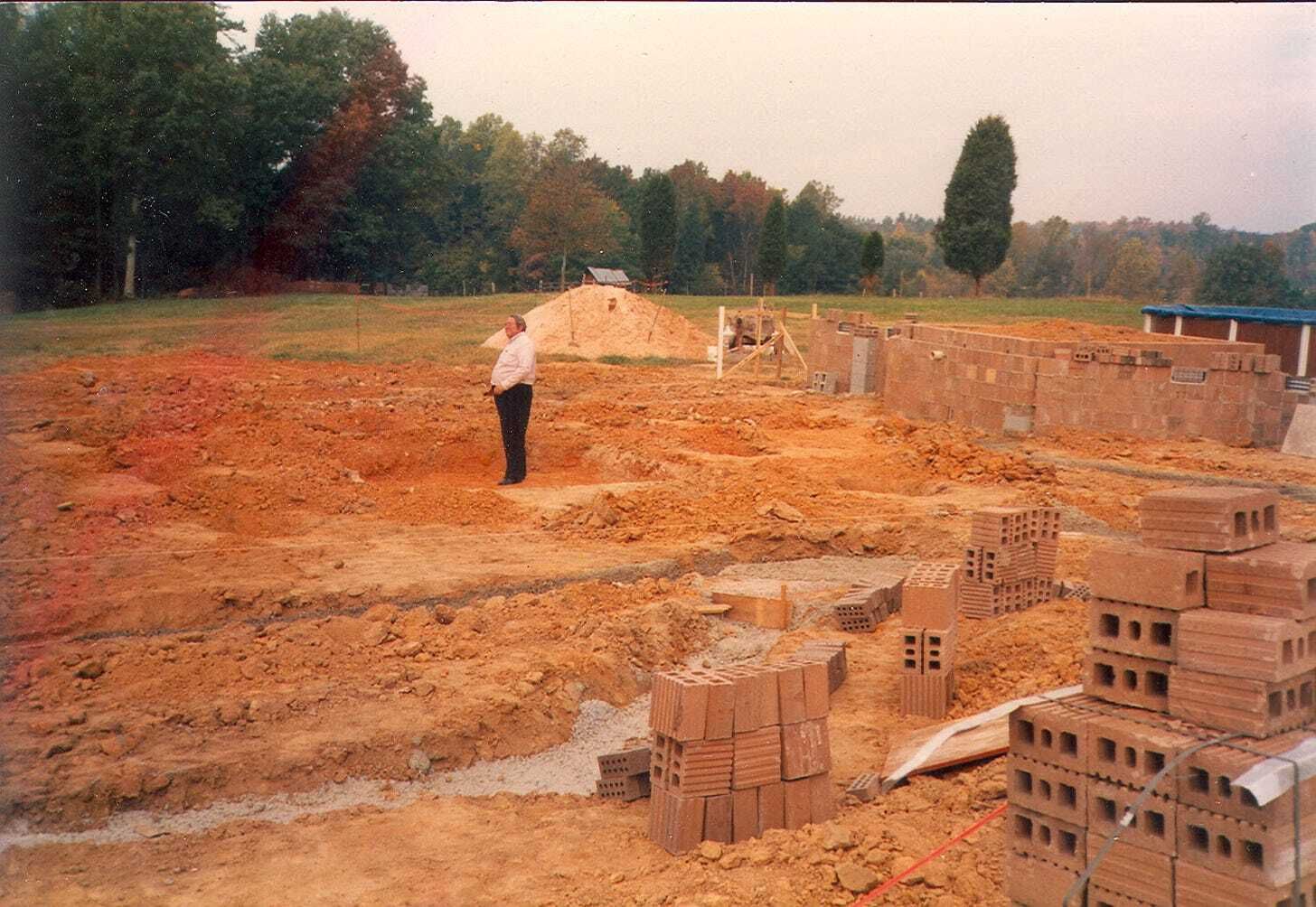
The who part of this is named right there in the listing: James F. Kluttz. It only took a quick search to pull up James’s listing on the NC Modernist website. Born in 1934. Died in 1995. Graduated from the North Carolina State University School of Design in 1960. He got another degree in city planning from UNC-Chapel Hill in 1968, then went to work as an architect in Salisbury. Initially, that’s about all I could find. George Smart of Modernist Archive, who runs the website, only found out about Kluttz and the pyramids themselves a few months ago, when the they went up for sale. Smart has made it his mission to find, document, and preserve Modernist homes (Fun fact: His own home in Durham is so Modernist that at first, his mail carriers didn’t deliver letters and packages because they thought it was a fire station).
Smart says most Modernist homes have four basic design principles: A mostly-flat roof, an open floor plan, unusual geometry, and lots of windows. Do the pyramids qualify? “Not perfectly,” Smart says, “but the intent is to have a Modernist vibe.” There are, maybe, 15 to 20 homes in North Carolina that are sort of in the ballpark of this one. But Smart says most of them are dome homes, which were made famous by Black Mountain College’s Buckminster Fuller right after World War II. The pyramids are sort of in a category all their own.
Which, uh, might make them a little harder to sell. The key to finding a buyer is to market a house like this nationally, not locally. “A lot of people might be interested in this,” says Smart, “but they don’t necessarily live 10 miles away.”
Smart didn’t have much more to add about this particular property, but he did point me in the direction of someone who knew a lot about it: Kluttz’s daughter Kate.
A Good Leed
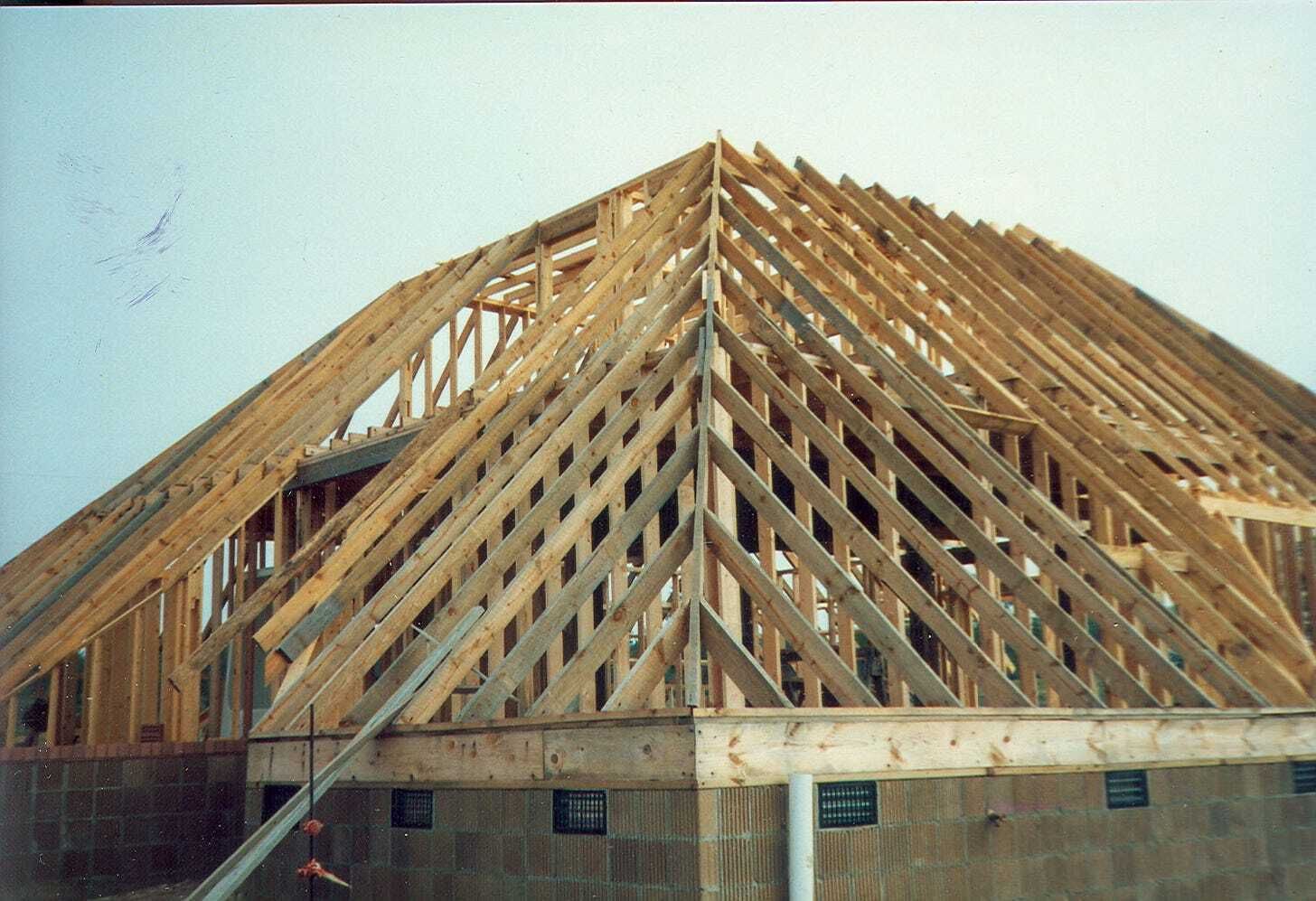
Kate now lives in London, and works in the library at Leeds Beckett University. She’s been in England for 12 years now, which is long enough for her to drop the occasional “mum” instead of “mom.” Her daughter, however, has a full-blown Yorkshire accent, which is quite a change from the accents that Kate grew up with in Rowan County. She misses home. A little. “I don’t miss the giant cockroaches and humidity,” she says.
Her dad was originally from Cabarrus County, where his parents ran a lumber and construction company. Her mom, Jean, was from California and went to college in Oakland, where her mother said Jean "only learned how to smoke cigarettes and play cards." Jean and James met in the 1950s, when James was serving in the military in West Germany. They, according to Kate, rushed into marriage in 1959 and moved to Rowan County, to an “area that’s crawling with Kluttzes,” she says. (Kate pronounces her last name “kluhts,” if you’re wondering.)
After finishing his architecture training under Buckminster Fuller, George Matsumoto, and Eduardo Catalano at North Carolina State, James found himself in an overcrowded, difficult field. He worked for a firm in Salisbury before striking out on his own. He drew up some home additions here and some gym renovations there. He designed a library branch down the road which was mostly just a brick box. He worked on a few churches too. One of them, for a Lutheran congregation, “looked like a spaceship inside,” Kate says.
But mostly, Kate says, “he didn’t get to do interesting stuff.” Around Salisbury, there just wasn’t any demand for it.
So, the experimentation mostly happened on his own property. He put flat Modernist roofs on the family’s first house on Maxwell Street in Salisbury, and at a getaway cabin on High Rock Lake. There, he also created a floating dock in the shape of a tetrahedron. “It was the only one out on the lake and was a great landmark for passing boat traffic,” Kate’s sister Karen tells me.
And then James bought a farm.
The Pyramids Rise
The family needed a place to live, so James converted an old milking parlor into a living space. Then, in the late 1980s, he decided to build something more exotic. The red pyramid came first. It wasn’t actually supposed to be red, but when the wrong color roofing material showed up, James rolled with it.
The red pyramid ended up being the place where James stored his farm equipment and cars, ran a small wood shop, and kept an office. It was “the business pyramid,” as Karen called it. The next pyramid, the blue one, came a few years later. It was the home.
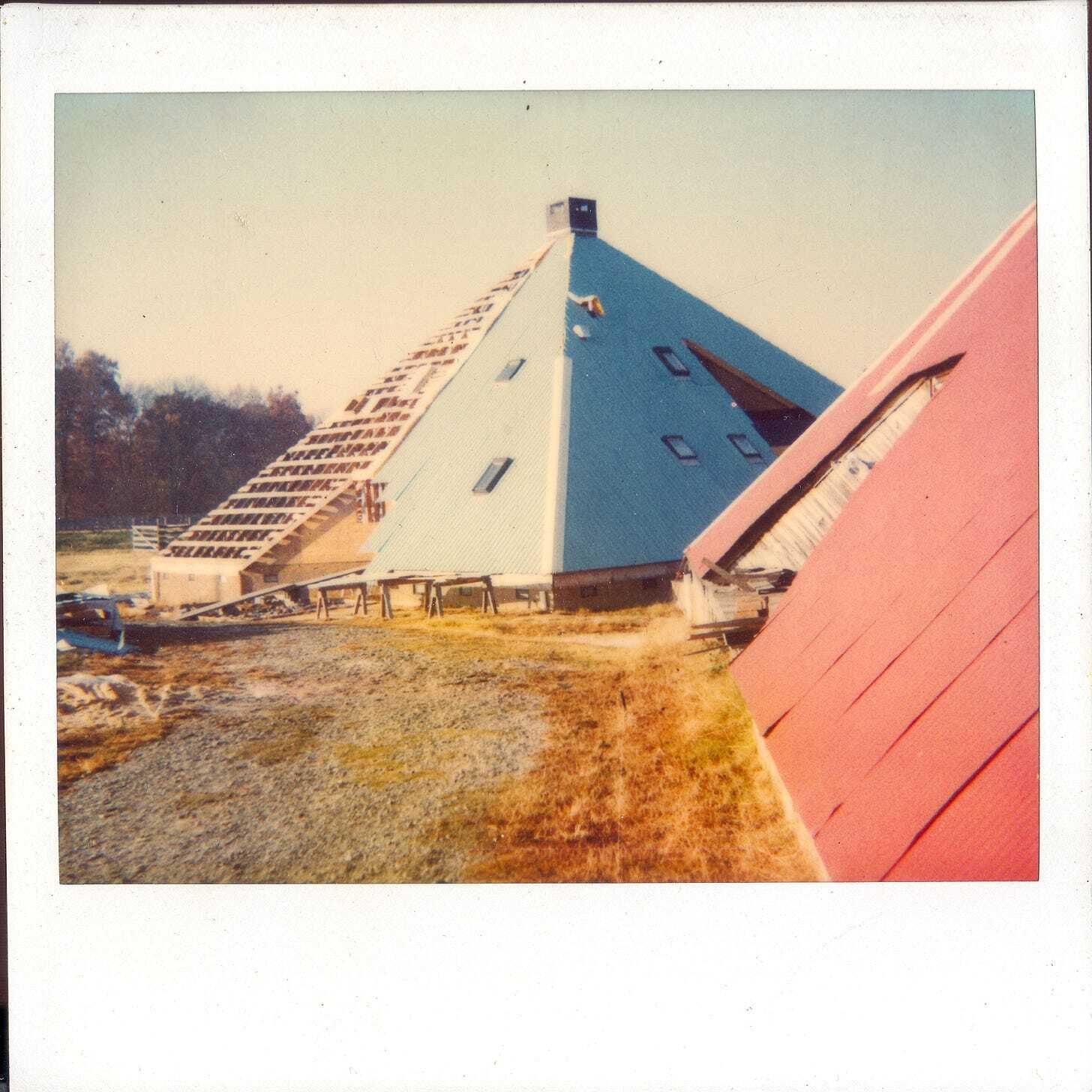
Kate and her family moved in when she was 14. She had a bedroom on the ground floor, and she’d take the screen out of her window at night to let the feral cats in. The inside of the house was mostly open with a large fireplace in the center that spouted smoke out of the tip top of the pyramid. Because of the design, there was a lot of open storage space around the bottom. “We had what we referred to as the largest closet in Rowan County,” Kate says.
It was noisy inside. Kate remembers the sounds of her dad watching Wall Street Week on PBS echoing throughout the house. Solar panels on the blue pyramid heated water. A Finnish stove used a little bit of wood to generate enough heat to keep the whole place warm in the winter. There weren’t many windows, but that was okay, since there were big porches and decks. In general, the family spent as much time outside as possible. James planted fig, heartnut, persimmon, and sequoia trees. The family raised animals and grew all sorts of tomatoes in a large organic garden. “We would go hiking down in the woods to see the trillium blooming, or collecting hickory nuts or black walnuts for cookies,” she says. “Or, [we’d go] down deep into the woods to pick out an evergreen to use as a Christmas tree, with the dogs, horses, goats and a cat or two along to supervise.”
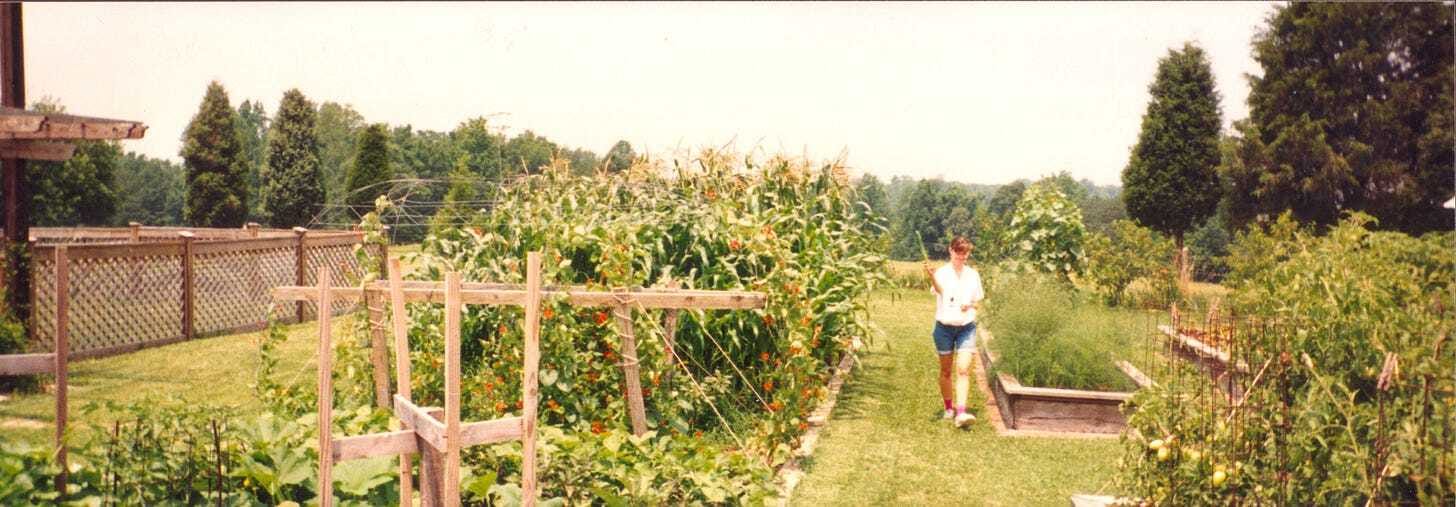
Most of Kate’s strongest memories of the place were also created outside of the house. She and her sisters would run through the woods. Their dad would yell at them when they’d stomp through the garden (You’re compacting the dirt! he’d tell them in extreme dad fashion). Her mom would paint. Her dad would try to collect enough sap to make maple syrup. “One year, my dad made some horrible birch twig beer or something,” she says. “It was pretty nasty, but he made my sister’s university friends drink it.” How very dad of him.
The family life was sort of dysfunctional, Kate says. Her dad was extroverted. Her mom was the opposite. But every family’s dysfunctional somehow, she says. The pyramids weren’t strange to her. They were home.
What is Normal, Anyway?
Of course, a pyramid home is, by definition, unusual. “The kids on my bus would refer to them as ‘them triangle houses,’” Kate says. Even the Air National Guard took notice and used the pyramids as a navigational landmark, Karen says. During President George H.W. Bush’s visit to Faith, North Carolina in 1992, several large helicopters flew over, then came back to take a second look. “I was used to aircraft giving the pyramids the side eye. But these were lower and bigger than normal,” Karen says. “I'm totally guessing that was Bush.”
But here’s the thing: Living there wasn’t all that weird. “A lot of weird stuff happens in the countryside,” Kate says. “I mean, it is a little bit nutty. But at the same time, we knew other people with artists as parents. We grew up taking for granted that making stuff is normal.”
“Some may label him eccentric,” Karen says of her father. “But he was always practical in his flights of intellectual exploration.”
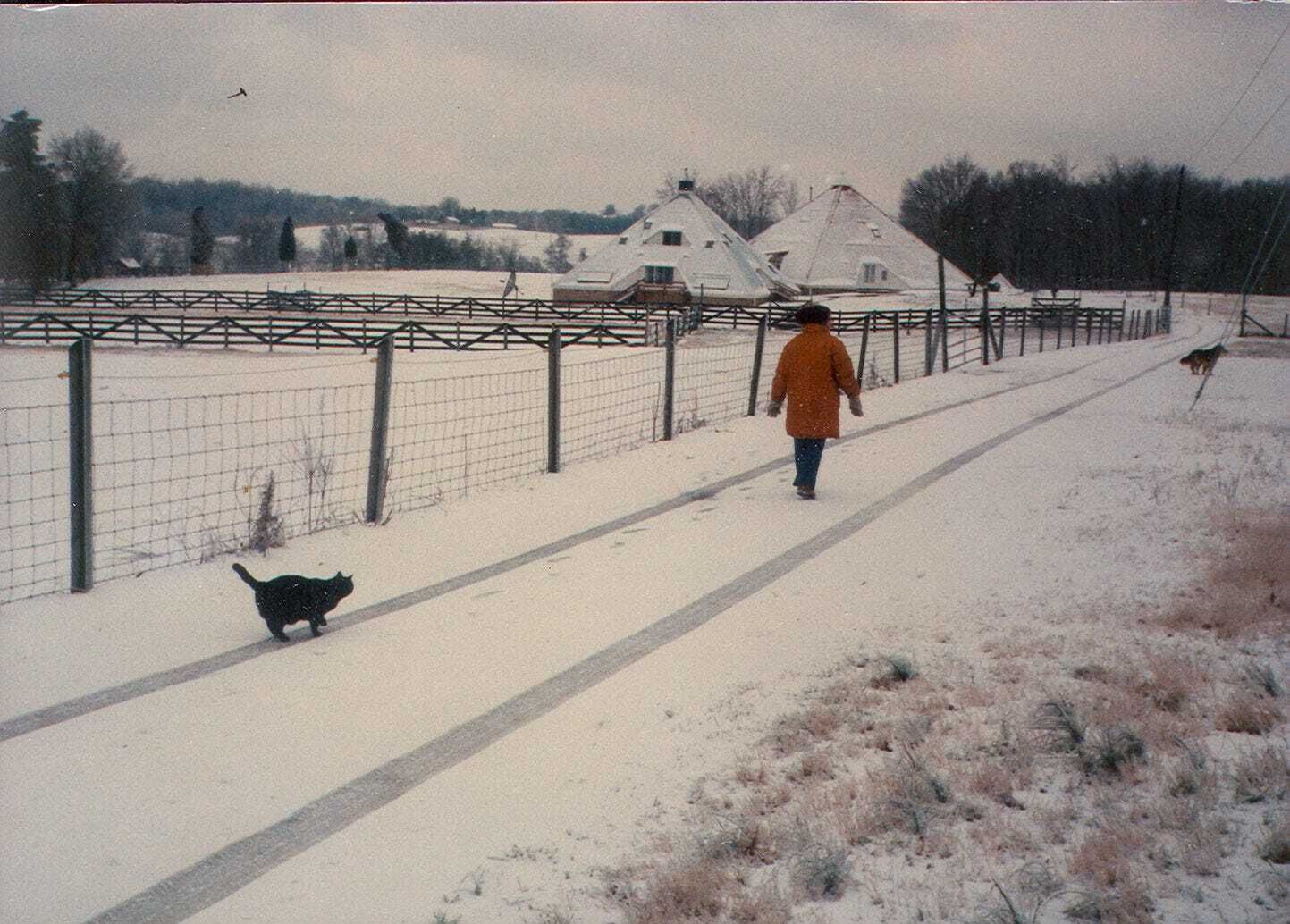
Kate’s time in the pyramids was relatively short. When she was 20 years old and off at UNC-Greensboro, her father died of a heart attack at age 60. Her mom couldn’t take care of the homes, and sold them off when Kate was off in grad school in Texas. She really never asked her parents why they decided to build pyramids in the North Carolina countryside. There’s mostly just circumstantial evidence. James visited Teotihuacan in Mexico back in the 1950s. He owned books about pyramids, most notably Secrets of the Great Pyramid by Peter Tompkins, along with David McCaulley's Pyramid. Maybe, Kate says, “my dad could have had a pharaoh complex.” But really, she doesn’t know, and probably never will. “I wish I knew more about what he was thinking.”
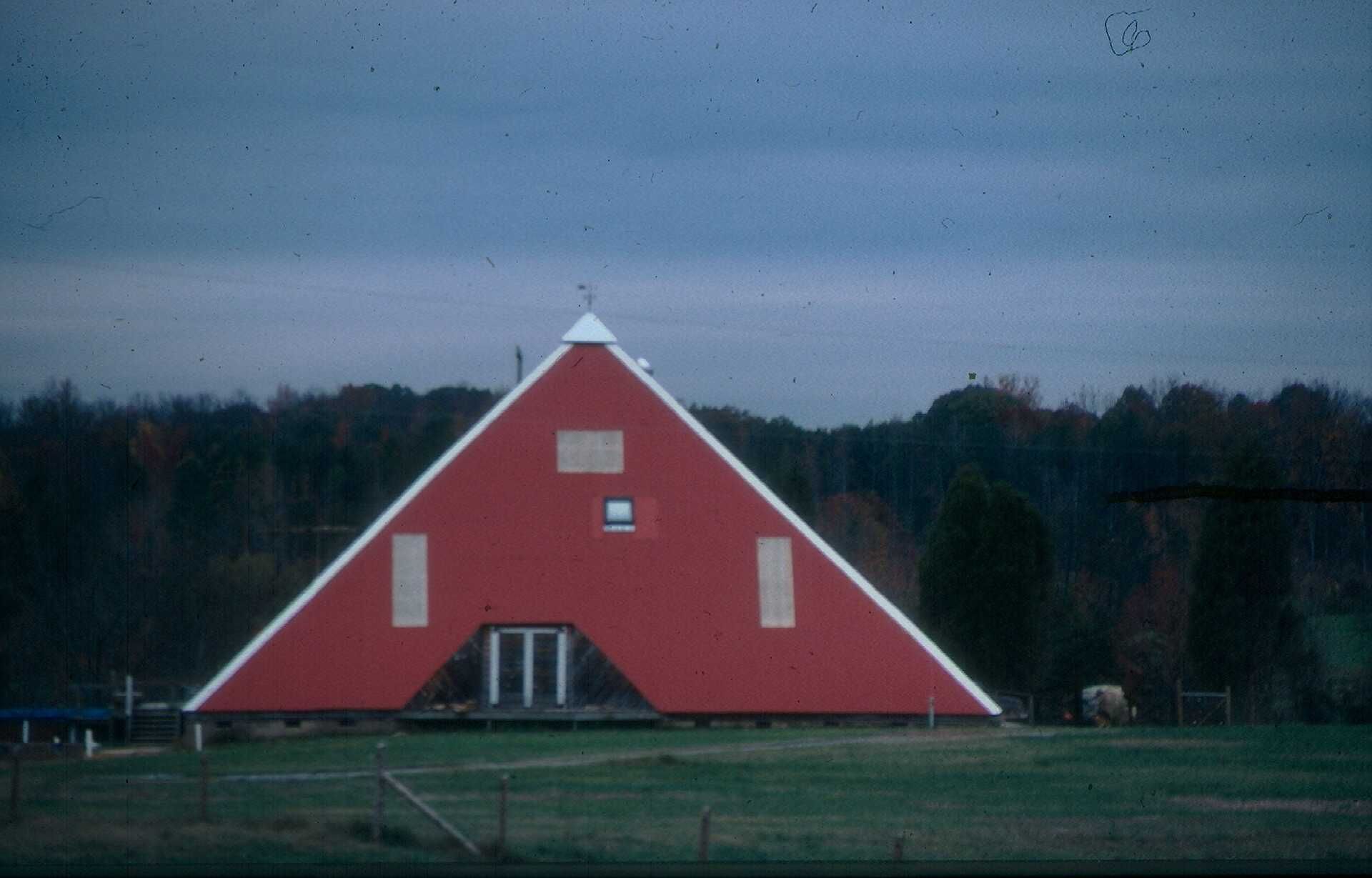
The pyramids need some repair (which is evident from this TikTok tour), but Karen thinks they’re still a good deal. “They are the best party houses ever,” she tells me. “I hope someone who is really social buys them.” For Kate, though, seeing the pyramids today is bittersweet. Now that she’s older, she appreciates their quirkiness, but can’t talk to her parents about them anymore. She doesn’t get back to Rowan County much. And over and over during our conversation, she kept apologizing. “I’m sorry!” she says, “It’s not all that interesting!” And maybe that’s the most interesting part: That growing up in a large set of North Carolina pyramids wasn’t that weird at all. “It was great living in it,” Kate says. “It felt normal to me.”
UPDATE: After nearly a year-and-a-half on the market, the pyramids never sold, and the listing was pulled on January 3, 2024.
